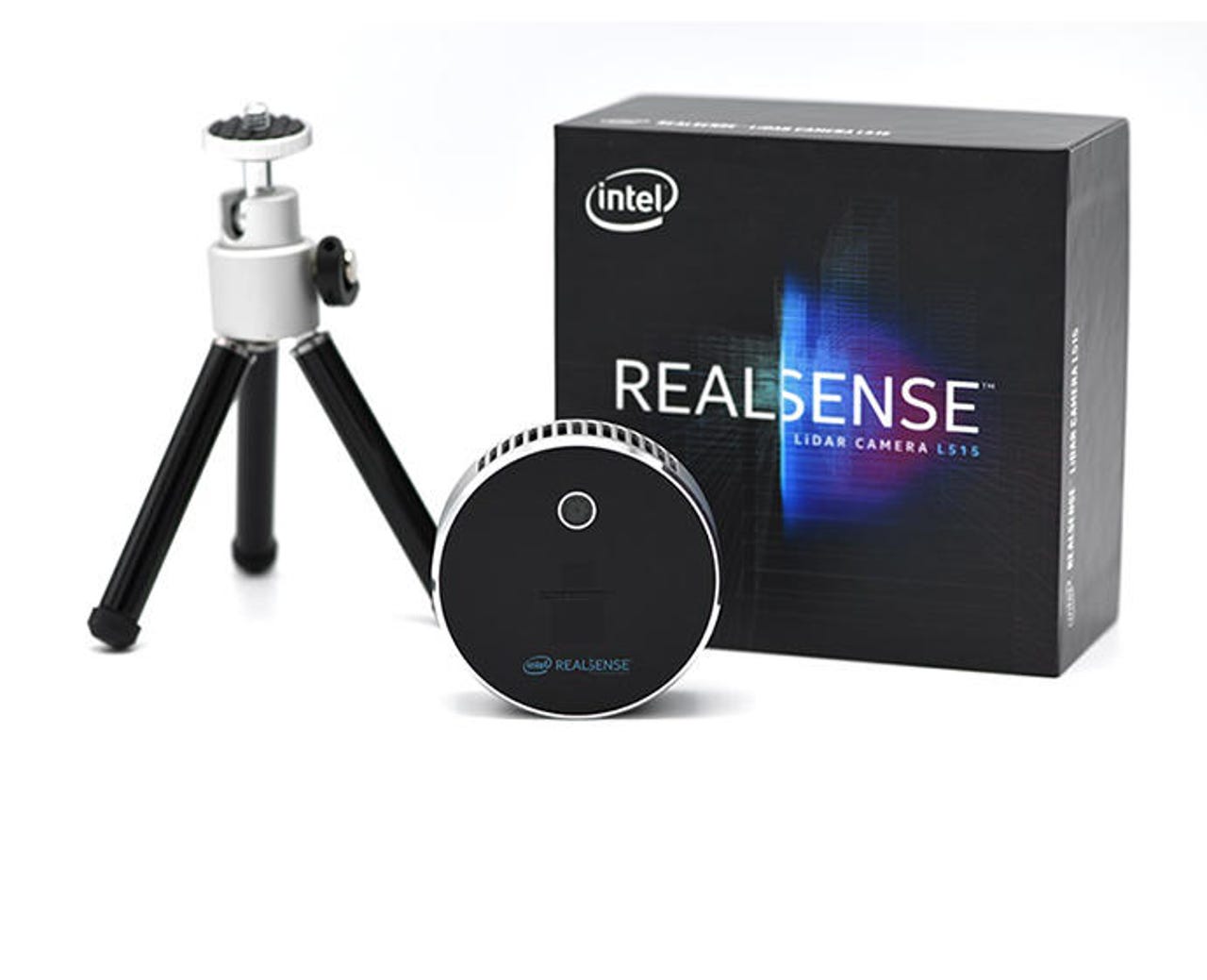Intel's new RealSense camera brings hi-res Lidar to a small form factor


Intel on Wednesday introduced the RealSense Lidar camera L515, which Intel says is the world's smallest hi-res Lidar camera.
RealSense cameras are used to help products "see" the world around them in 3D by tracking movement and depth. Using proprietary Lidar technology, Intel says the new camera delivers "unparalleled" levels of depth perception and accuracy that are ideal for indoor uses cases in the logistics industry, as well as in healthcare, retail and robotics.
The L515 provides over 23 million accurate depth pixels per second, with a depth resolution of 1024 x 768 at 30 frames per second. It has an internal vision processor, motion blur artifact reduction and short photon-to-depth latency. The camera also has an accelerometer, gyroscope and FHD RGB sensor.
The L515's accuracy range extends from 0.25m to 9m, with the ability to scan fast-moving objects up to nine meters away with no motion blur.
In addition to offering high depth and accuracy, the L515 is power efficient, thanks to the design of the RealSense Lidar technology, Intel says. Typically, Light Detection and Ranging (Lidar) systems measure the distance to objects using a combination of laser light and receivers. By contrast, Intel says its RealSense Lidar technology uses an advanced, miniature micro-electro-mechanical system mirror to scan the scene. This enables the reduction of the laser pulse power. The lightweight L515 -- which is smaller than a tennis ball -- consumes less than 3.5 watts of power, making it easy to mount on handheld devices.
Like other RealSense devices, the camera uses the open source Intel RealSense SDK 2.0.
Intel highlighted how the logistics industry could use the L515 to automate inventory management, using the camera to take precise volumetric measurements of products to make sure inventory is in the right place.